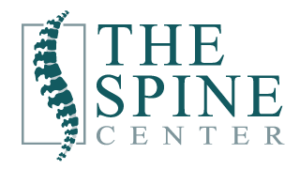Do you keep rubbing your neck? Does it hurt to get up in the morning? If your neck and back pain persists, it could impact your quality of life.
Chiropractic adjustments are performed 1 million times every business day in the US. When was the last time you scheduled an appointment?
You might need more than simple chiropractic treatment, though. Instead, talk to your chiropractor about spinal decompression therapy.
What is spinal decompression therapy, exactly, and how can it help? Keep reading to find out!
What Is Non-Surgical Spinal Decompression Therapy?
Before we go into the potential health benefits of spinal decompression therapy, let’s answer the question on everyone’s mind.
What is spinal decompression, exactly?
This form of therapy uses motorized traction to ease neck and back pain. The treatment works by stretching your spine to adjust its position. Pressure should ease off your spinal disks as a result.
These disks are gelatinous cushions positioned between the bones in your spine. Decompression therapy uses negative pressure within the disk to ease pain symptoms.
Any bulging or herniated disks you’ve developed should retract as well.
Once the pressure reduces, fluids should have an easier time moving to your spinal disks. The water, oxygen, and nutrients in these fluids can promote healing.
Does it work? Yes! Decompression therapy for the spine has an 86% success rate.
Your chiropractor will customize your treatment with your specific needs in mind. Receiving a personalized form of treatment can help relieve the root cause of your pain. In the meantime, you won’t have to rely on painkillers, which can become costly.
The Treatment
You’ll remain clothed during your decompression treatment. A chiropractor will need to place a harness around your neck, pelvis and trunk. Once it’s fitted, you’ll lie face down on a computer-controlled table. Lying face-up or face-down depends on the disc level and patient tolerance. If you are suffering from lower back pain, your chiropractor may place the harness around your hips. This will allow the upper portion of the table to remain fixed while the lower half has freedom to slide.
Your chiropractor will create a customized treatment based on the severity of your pain. Once they’ve set your treatment into the computer, they’ll activate the device.
The device will relax and stretch your spine. Using a computer instead of manual treatment allows your chiropractor to control the pressure.
The treatment should help retract or reposition a herniated disk. It can also help nutrients travel to the injured areas to promote healing.
Your chiropractor can then create an alternating axial decompression and rest to ease your lower back pain.
A neck cradle helps patients suffering from pain in the upper portion of the spine. The neck cradle slides gently upward, taking pressure off of painful joints and disks in the neck to ease headaches, pain and stiffness.
It helps to know that decompression therapy isn’t painful. A session can last up to 45 minutes. You might need to schedule multiple treatments over the course of a month or two for the best results.
If your pain is severe, talk to your chiropractor about combining decompression therapy with other treatments. For example, they can use heat or cold therapy to ease inflammation along your spine. They might suggest an ultrasound or electrical stimulation as well.
Ideal Patients
Your chiropractor might suggest spinal decompression therapy is you complain of:
- Neck or back pain
- Bulging or herniated disks
- Degenerative disk disease
- Injured or diseased spinal nerve roots
- Worn spinal joints
- Sciatica (weakness, pain, or tingling down your leg)
Let your chiropractor know if you’re experiencing any of these symptoms.
You can use decompression therapy to replace other forms of therapy, including physical therapy, nonsteroidal anti-inflammatory drugs, or acupuncture. If you’ve tried these forms of treatment, along with rest and exercise, speak with your chiropractor.
They can help you determine if you’re an ideal patient for spinal decompression therapy.
About 19.4 million people (8.4% of adults in the US) are already using chiropractic therapy. Not all chiropractic patients are ideal for this form of therapy, though. For example, you shouldn’t receive this therapy if you’re pregnant.
Let your chiropractor know if you have advanced osteoporosis, a tumor, fracture, or abdominal aortic aneurysm. These conditions indicate you’re not an ideal candidate.
Pros and Cons
What are the benefits of spinal decompression therapy?
- For starters, it can help ease your pain symptoms.
- Relieving your pain can improve your mobility and range of motion. It can also help you avoid a disability down the road. Otherwise, you might have a difficult time working or doing some of the activities you love.
- Do you live a sedentary lifestyle? Do you sit at a desk for long hours at a time? A lot of sitting can cause wear and degeneration on your spinal discs.
- This form of therapy can help reduce your risk of spinal degeneration.
- It’s also a non-invasive treatment option if you’re suffering from chronic pain. It also doesn’t require medication, allowing you to avoid the risk of addiction.
- By choosing decompression therapy, you won’t have to rely on drugs to ease your pain. Instead, you can choose a natural pain relief option. The treatment will ease the pressure on your spine, focusing on the root cause of your pain.
- Patients who choose spinal therapy run the risk of taking medications that could cause dangerous side effects. Many of these painkillers are also addictive.
- Decompression therapy offers fast results as well. You should start to experience pain relief after your first treatment session. Spinal surgery, on the other hand, requires medication, a recovery period, and time.
There are a few risks involved, though.
- For example, infection, blood clots, and bleeding are potential risks.
- Nerve or tissue damage is possible.
Review the potential risks with your chiropractor to determine if spinal decompression therapy is right for you.
Get Your Back on Track: Understanding Spinal Decompression Therapy
Don’t let chronic back pain impact your quality of life. Instead, get back on track with spinal decompression therapy. Speak with your chiropractor today to determine if this course of treatment is right for you.
Want to discuss your treatment options with a professional? We’re here to help.



1 Comment
Comments are closed.